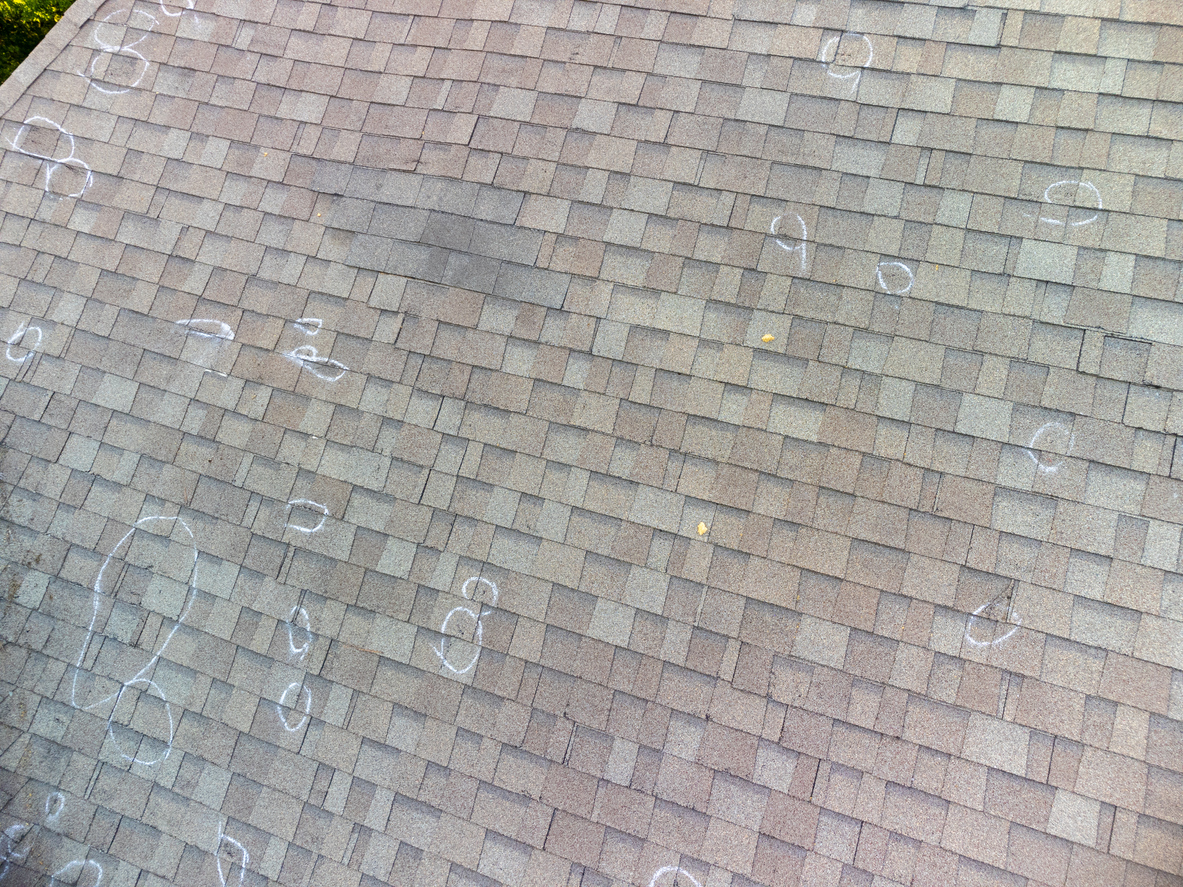State Farm has been the subject of many questions and comments during my presentations over the past several years. So, I became intrigued by the company’s tooth-and-nail fight against a customer over an alleged hail-damaged roof that was replaced for only $18,740. This recent federal court decision from Alabama highlights the growing importance of causation expert testimony in property insurance cases involving hail damage to roofs. 1
The case involved a policyholder, Thomas Bonds, who discovered a leak in his ceiling in November 2020. After multiple contractors suggested hail damage was present, Bonds filed a claim with State Farm in May 2021.
The court’s ruling centered on two key aspects: whether State Farm breached its contract by denying full roof replacement and whether the investigation of the claim constituted bad faith. State Farm’s position, which ultimately prevailed, was that the roof damage was primarily due to wear and tear – an excluded cause under the policy. The insurer’s adjuster found only limited wind damage to 16 shingles and no evidence of hail impact, leading to an estimate below the policy deductible.
What makes this case particularly interesting from a policyholder advocacy perspective is the battle over expert testimony. The policyholder’s claims practice expert, Ivey Gilmore, was retained to opine on State Farm’s claims handling practices. While Gilmore had extensive experience as both an insurance adjuster and attorney, the court ultimately gave more weight to State Farm’s causation evidence regarding the roof’s condition, and the policyholder’s lack of causation proof by an expert qualified to testify that hail damaged the property.
State Farm’s summary judgment motion effectively argued that the policyholder couldn’t establish the essential elements of either the breach of contract or bad faith claims. The insurer emphasized that the policy explicitly excluded damage consisting of wear and tear, and pointed to evidence that the 16-year-old roof showed significant deterioration consistent with age rather than hail damage.
One of the more concerning aspects of this decision is how it handled the causation evidence. The court determined that lay witness testimony from roofing contractors about hail damage was insufficient to create a genuine issue of material fact when opposed by State Farm’s expert evidence. This highlights a growing trend where courts require expert testimony to establish causation in property damage cases, particularly when dealing with complex issues like distinguishing hail damage from wear and tear. One problem arises if the roof gets replaced by the policyholder, who may not be sophisticated enough to know that most hail damage experts will want to see the roof before the policyholder repairs or replaces the roof.
The policyholder’s claims expert, Gilmore, raised important points about State Farm’s investigation standards. Based on his review of the claim file and company materials, he questioned whether State Farm conducted a thorough enough investigation before concluding the damage was from wear and tear rather than hail. This included concerns about the timing and scope of the inspection, and whether State Farm properly considered the contractors’ observations about hail impact patterns.
The case reminds policyholders and public adjusters of the importance of early causation experts in property damage claims, particularly those involving hailstorm damage to roofs. When insurers attribute damage to wear and tear, policyholders need qualified experts who can scientifically distinguish storm damage from normal deterioration. The court’s emphasis on expert testimony over contractor observations suggests that simply having multiple contractors identify possible hail damage isn’t enough to overcome an insurer’s expert causation evidence.
While Gilmore raised valid concerns about State Farm’s investigation practices, the lack of competing expert testimony on causation proved fatal to the policyholder’s case. The court’s ruling suggests that even if an insurer’s investigation is imperfect, the existence of a debatable reason for denial can defeat a bad faith claim.
This case reminds us that successful property damage claims often require a two-pronged approach: expert testimony on causation and evidence of improper claims handling practices. While contractor opinions remain valuable, courts increasingly expect scientific expert testimony to establish causation when dealing with complex damage patterns and competing causes of loss.
For public adjusters facing similar situations where a roof is allegedly damaged by hail, the lesson is clear: early involvement of qualified experts who can document and explain storm damage patterns may be essential to overcome an insurer’s wear and tear defense. Public adjusters should discuss with the policyholders whether they will retain these experts as part of their services when they are engaged. The days of relying solely on contractor opinions to establish causation in complex property damage cases may be behind us.
The quality of legal representation for the policyholder and the insurance company was excellent. The Butler Snow firm did a magical job for State Farm convincing the court that the independent adjuster was an “expert witness,” with the court finding:
Instead, the evidence shows that Bonds’ roof needed to be replaced because it was worn out. Indeed, State Farm’s adjuster (and expert witness) found that Bonds’ roof was ‘approximately 16 years old in poor condition with wear inconsistent with its age’—in other words, Bonds’ roof appeared to be even older than it was. The adjuster also found ‘wind damage to the front, left, [and] rear slopes’ of the roof, but ‘[n]o hail related damage was observed on any of the dwelling slopes.’
Because State Farm has submitted evidence showing that only 16 shingles of Bonds’ roof were damaged by a covered cause, the burden to introduce evidence showing that the policy did cover a full replacement shifts back to Bonds.
For policyholders, insurance companies have different claims cultures. Some good insurance companies have a culture of looking for ways to find coverage and reasons to pay. They usually charge a higher premium but do not end up in court fighting you as often as other insurers. Other insurance companies have a culture of “not paying a penny more” than what is owed, as if any reasonable amount is down to an exact penny and every fact situation is clear cut.
In this case, the State Farm insurance agent told the policyholder which roofing contractor should be called out for help. That is what the policyholder did. The claims department hired an independent insurance adjuster who is not an employee of State Farm and who had a different opinion than the roofer (and a couple more roofers) about the hail damage. And that is how a dispute for something slightly less than $20,000 ended up in a federal court, with State Farm certainly paying much more money to its outstanding attorneys in fees than what it could have paid to its customer to repair the roof.
Thought For The Day
“Listen with curiosity. Speak with honesty. Act with integrity”
—Roy Bennett
1 Bonds v. State Farm Ins. Co., 5:22-cv-618 (N.D. Ala. Nov. 26, 2024).




